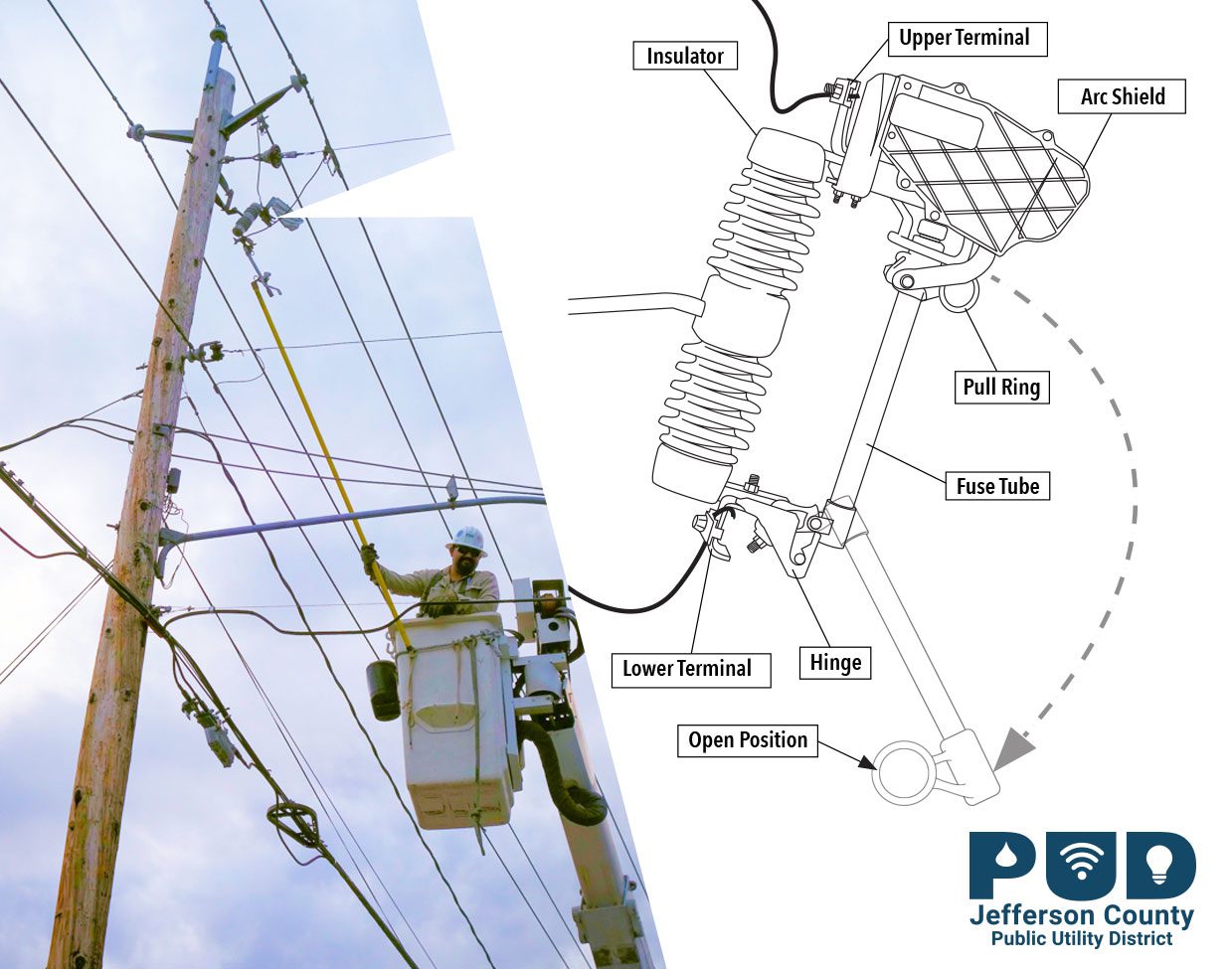What’s that? Cutout
What’s that, fireworks in October? Not very likely…rather, that bright blue flash you see on a rainy, stormy evening most likely is a cutout fuse protecting the grid.
Cutout fuses help protect the PUD’s distribution system, providing a simple, easily replaced failsafe that keeps more expensive equipment from damage due to overcurrent.
Overcurrent occurs when an object, like a tree branch, contacts a distribution line and faults by contacting another line or ground. During an overcurrent event, the cutout fuse weakens until it breaks and interrupts the flow of power. The result is a localized power outage (hopefully) before damage occurs to the sensitive (and far more expensive) equipment nearby, or before upstream protective devices operate and the problem evolves into a community-wide outage.
 Cutouts are typically mounted to utility poles and are rated to handle a variety of different voltage and current levels present in the PUD service territory.
Cutouts are typically mounted to utility poles and are rated to handle a variety of different voltage and current levels present in the PUD service territory.
The cutout consists of an insulator with terminal at the top and bottom. The top terminal accepts the incoming “hot” primary distribution line, and the bottom terminal connects to the transformer. The fuse body, which is typically a porcelain or polymer body to help prevent electrical arcing, houses a specifically sized metal wire called a “fuse link” inside. The fuse link melts when overcurrent occurs, and is the replaceable part of the fuse. The fuse body is capped with a metal top and bottom.
When an offending branch creates a fault, the current causes the fuse “gate” to open. Under most circumstances, the result is very anti-climactic…the fuse simply pivots downward and stays ajar, providing an immediate signal to the line crew where the issue is.
On occasion, a fuse can open with a brilliant flash of light and a sound like a gun shot or car backfire. A arc shield is installed to some cutouts to help curb potential sparks or arcing. Some fuses will not dislodge from the terminals, causing the caps to melt into place. In each instance, PUD systems will detect the outage and line crews will be enroute.
Once the damaged fuse is located, a lineman will use a devise known as a “hot stick” to reach up and remove the damaged fuse. Most fuses can be reused by replacing the internal metal component. A hot stick is rated for higher voltage and can hold and place the new fuse into the cutout. Once the line is cleared and determined safe, the lineman can quickly close-in the fuse by pivoting the fuse up and into the upper terminal. The top terminal is spring-loaded to help keep the fuse in place.
Cutouts are an essential part of our distribution system, helping ensure sensitive and expensive equipment remains safe during outage situations.